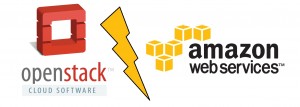 Rackspace’s President, Lew Moorman, has recently made a statement regarding the cloud market, basically stating that the industry needs to have an open source alternative to the current leader in public cloud infrastructure, Amazon Web Services. According to the Rackspace executive, the market is currently flooded with AWS clones, which means customers don’t really have any alternative, especially since said “clones” are all closed source.
Rackspace’s President, Lew Moorman, has recently made a statement regarding the cloud market, basically stating that the industry needs to have an open source alternative to the current leader in public cloud infrastructure, Amazon Web Services. According to the Rackspace executive, the market is currently flooded with AWS clones, which means customers don’t really have any alternative, especially since said “clones” are all closed source.
Rackspace, currently one of the public clouds that are directly competing with AWS, believes that their OpenStack can be the alternative to Amazon Web Services. Unfortunately, most vendors prefer to “clone” AWS, which Moorman warns against, as it eventually leads to Amazon having unnecessary control over the market.
Moorman further gives the advice that if cloud providers really want a free and competitive market, they can’t depend on the roadmap of another provider. In his recent presentation at the Structure conference in San Francisco, Moorman emphasizes that the evolution of cloud computing depends on a fundamental shift in how software interfaces with the underlying infrastructure. The past approach has software and infrastructure being tied together, which means the software is being limited by the capacity of the infrastructure it is depending on.
Nowadays, software is already emancipated from the infrastructure, which means software can be developed unfettered, and in some cases it is the software that will drive the infrastructure. Now that software is no longer being driven by infrastructure, Moorman contends that users need to have a choice regarding which underlying infrastructure they will use.
Moorman accepts the fact that Amazon Web Services already has a healthy head start when it comes to user adoption, which resulted in a lot of cloud vendors choosing to copy its infrastructure model, with the goal of implementing interoperability. The Rackspace executive believes that it leaves said cloud vendors at the mercy of their competitor, which is simply bad strategy for a business.
Of course, Moorman believes that Rackspace, which was founded with NASA back in 2010, is the platform that will provide an open source market alternative to AWS. Moorman cites the open source contributions of Linus Torvalds’ open source Linux to the OS industry as an example of what Openstack can do for the cloud market.
Moorman admits that Openstack still has a long way to go before it can go toe to toe with AWS. While organizers and contributors have already been working on the core code for two years, he concedes that the real test for the platform will only start when commercial cloud offerings based on Openstack code emerge and get adopted by end users.
There are other cloud platforms that are trying to position themselves as AWS alternatives, such as OpenNebula, Eucalyptus, and Citrix’s CloudStack, which is also released as an open source project via the Apache Software Foundation. However, Citrix is very vocal about the need for interoperability with AWS, by leveraging the AWS ecosystem with a set of common interfaces, a strategy that Moorman questions, under the reasoning that it’s just a cloning game that still leaves the industry with no real open alternative to Amazon’s cloud juggernaut.
Rackspace is betting everything it has on OpenStack, with their OpenStack platform being launched as a complete public cloud infrastructure by the end of this summer. Moorman says that additional announcements from contributing partners will follow, such as HP, which has already used the OpenStack framework as a basis for its Converged Cloud offering.
“I’m not saying proprietary doesn’t have a big role to play,” Moorman says. “But there’s no question that we need choice.”